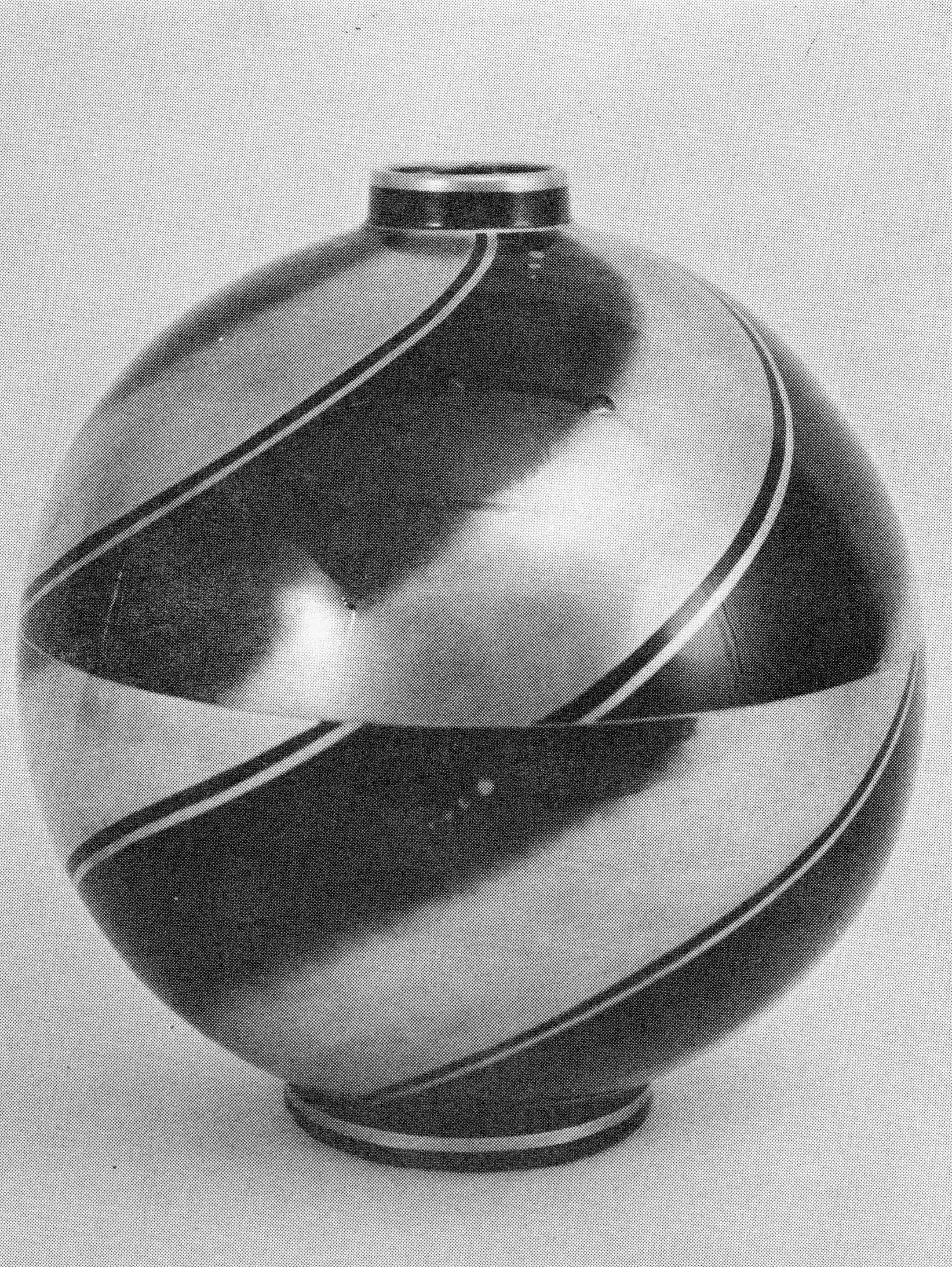- Art Deco: Trends in Design

French Vase.

French Vase.

French Vase.

French Mantel Garniture.

Rene Lalique, Penthievre Vase, 1915.

Pierre Legrain, Bookbinding, 1919.

Italian Alabaster Lamp.

Sunbeam, Chicago, Flexible Shaft Company, Coffee Pot.

American Tin Lunch Box.

C. Faure Limoges, Enamel Vase.

George Clews and Company, Square Tea Set made for the Cunard Steamship Company.

Paul Iribe, Nicolas Wine Advertisement.

Maurice Dufrene, Manner of Desk and Chair, German Marble Clock.

Art Deco: Trends in Design, Installation View at The Bergman Gallery, 1973.

Edward Hald, Orrefors Bowl.

Art Deco: Trends in Design, Installation View at The Bergman Gallery, 1973.

Art Deco: Trends in Design, Installation View at The Bergman Gallery, 1973.

Jean Dunand, Swiss Vase.

Art Deco: Trends in Design, Installation View at The Bergman Gallery, 1973.

Art Deco: Trends in Design, Installation View at The Bergman Gallery, 1973.

Art Deco: Trends in Design, Installation View at The Bergman Gallery, 1973.

Art Deco: Trends in Design, Installation View at The Bergman Gallery, 1973.

Art Deco: Trends in Design, Installation View at The Bergman Gallery, 1973.

Art Deco: Trends in Design, Installation View at The Bergman Gallery, 1973.

Mateo Hernandez, Eagle, 1918.

Art Deco: Trends in Design, Installation View at The Bergman Gallery, 1973.

Art Deco: Trends in Design, Installation View at The Bergman Gallery, 1973.

Art Deco: Trends in Design, Installation View at The Bergman Gallery, 1973.

Art Deco: Trends in Design, Installation View at The Bergman Gallery, 1973.

Christian Fjerdinstad, Danish Fruit Bowl, 1925.

Art Deco: Trends in Design, Installation View at The Bergman Gallery, 1973.
From the press release:
The Renaissance Society and the University’s Bergman Gallery are jointly presenting the exhibition* Art Deco: Trends in Design*.
Recent years have seen a revived interest in design and particularly in decorative arts of the 1920s and 1930s. The term “Art Deco,” reflecting the jazzy, stylish aspect of the period, was first coined in 1966; it is derived from the name of the great Paris exhibition of 1925,* L’Ex[postion Internationale des Art Decoratifs et Industriels Modernes* (International Exposition of Modern Decorative and Industrial Arts). In fact, the period was characterized by a greater diversity of ideals, tastes, and intentions than the term “Art Deco” implies and this is clearly reflected in the decorative arts of the time. While Mies van der Rohe and Le Corbusier were thinking in terms of simple, functional design capable of mass-production thus bringing master designs into the everyday life of many people, Emile-Jacques Ruhlmann and Jean Puiforcat were making elegant designs (in furniture and silver respectively) which carried on the old ebeniste tradition of custom-made objects for the privileged few. Machines and a new fascination with speed are reflected in designs for furniture, posters, and even home appliances while amusing, ingenious , and bizarre objects abound.
The present exhibition will emphasize the diversity of concurrent trends. Furniture, ceramic, glass, silver, metalwork, posters , prints, magazine advertistements, postage stamps, and textiles have been selected from Chicago area collections. Great names such as Ruhlmann, Corbusier, or Lalique and fine mass -produced items such as Sunbeam coffee maker are represented.